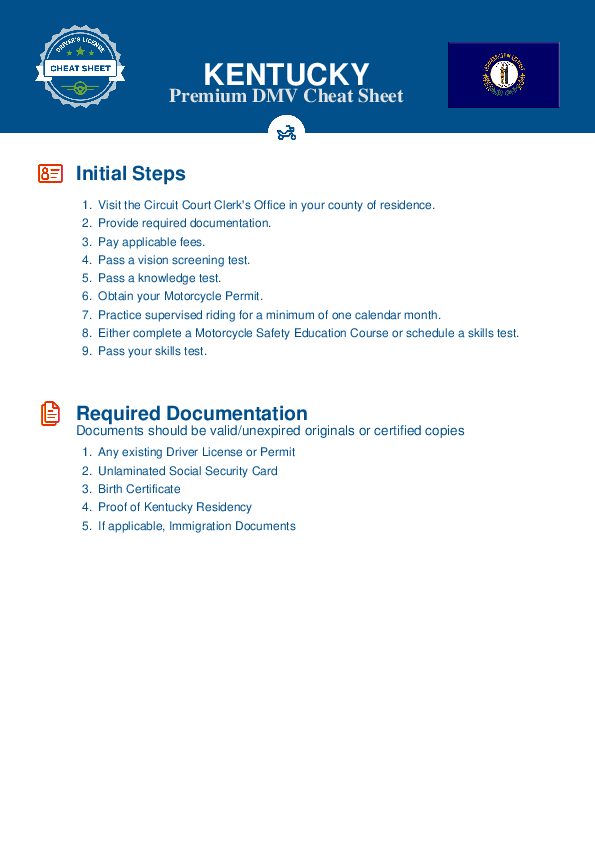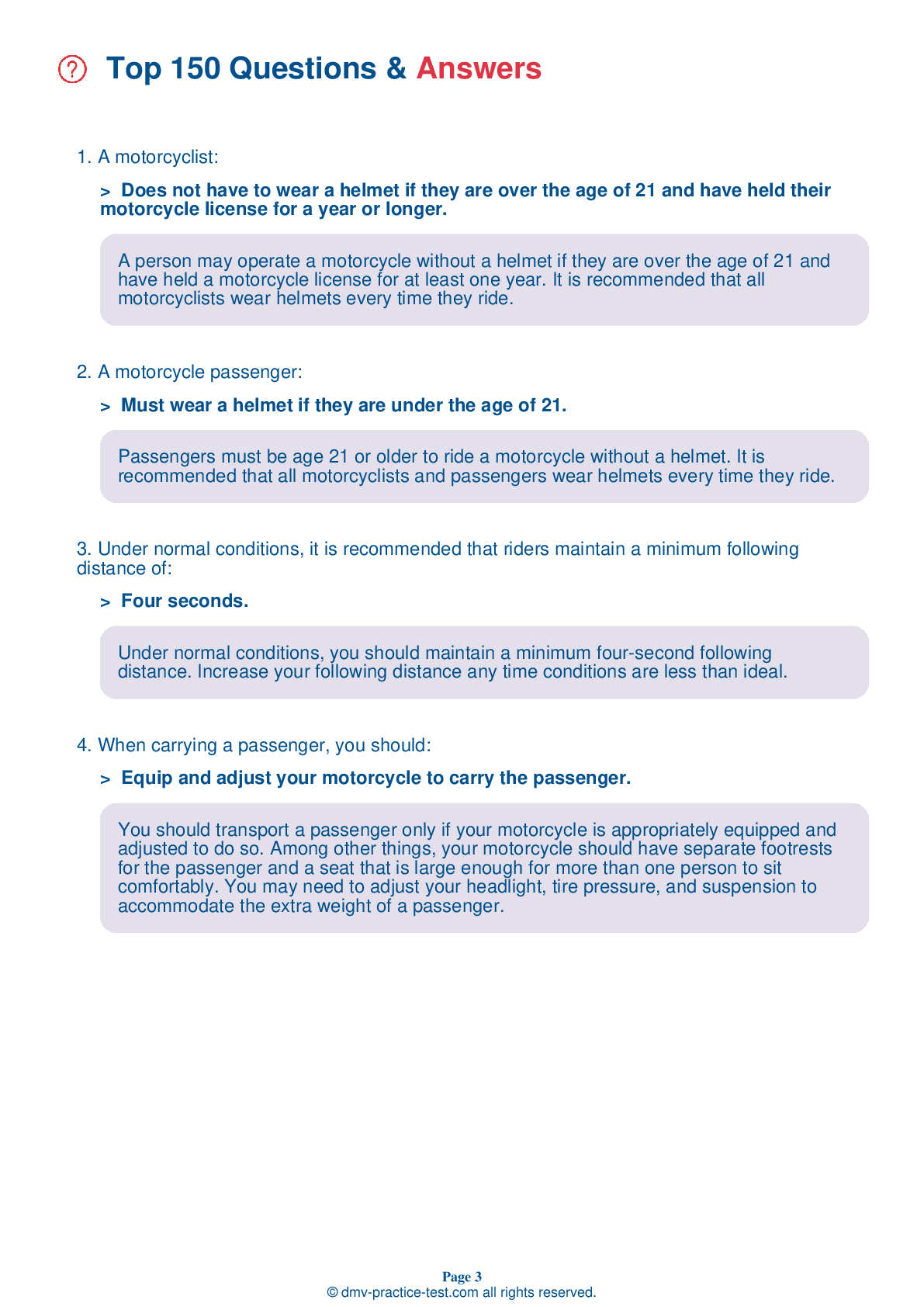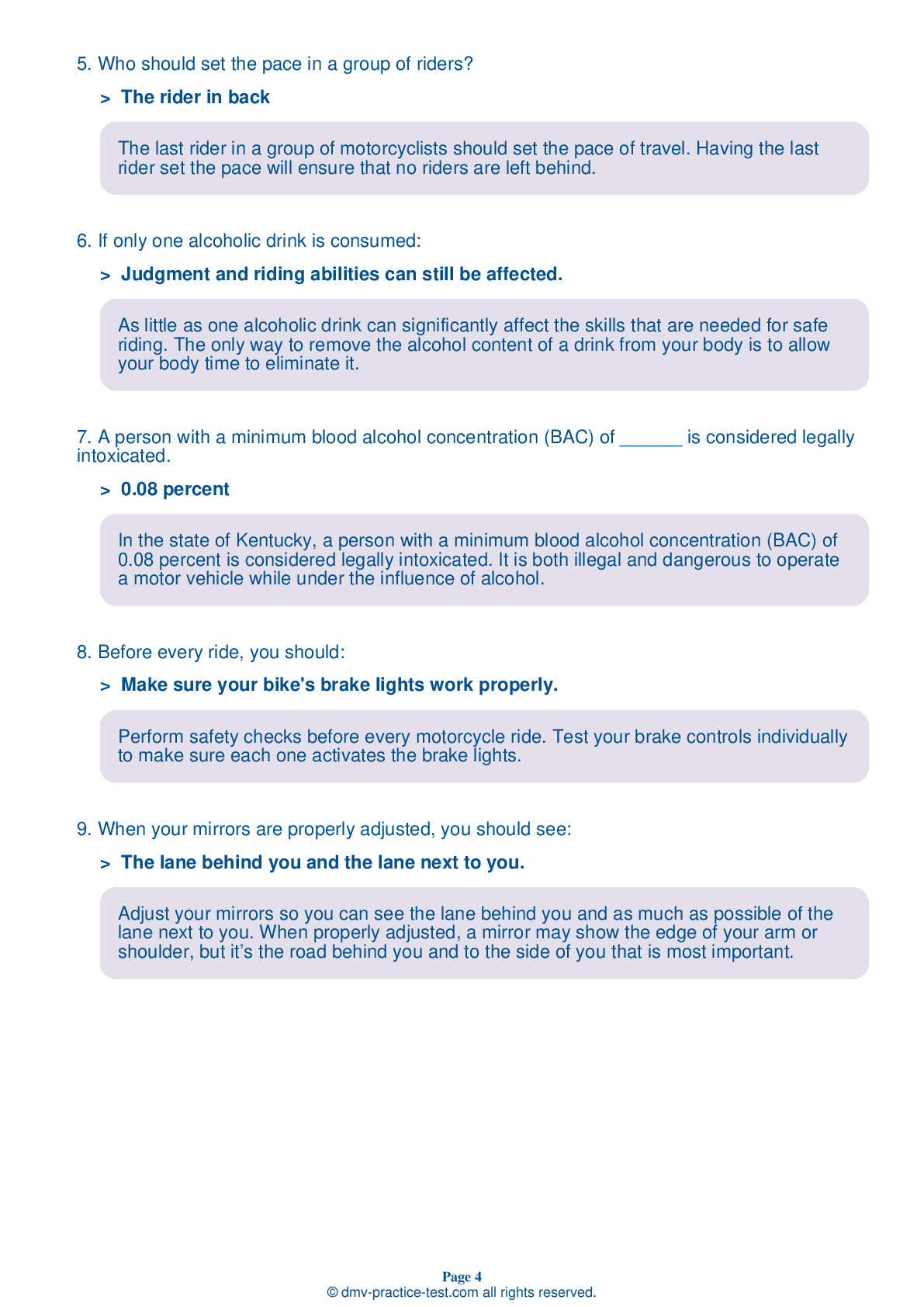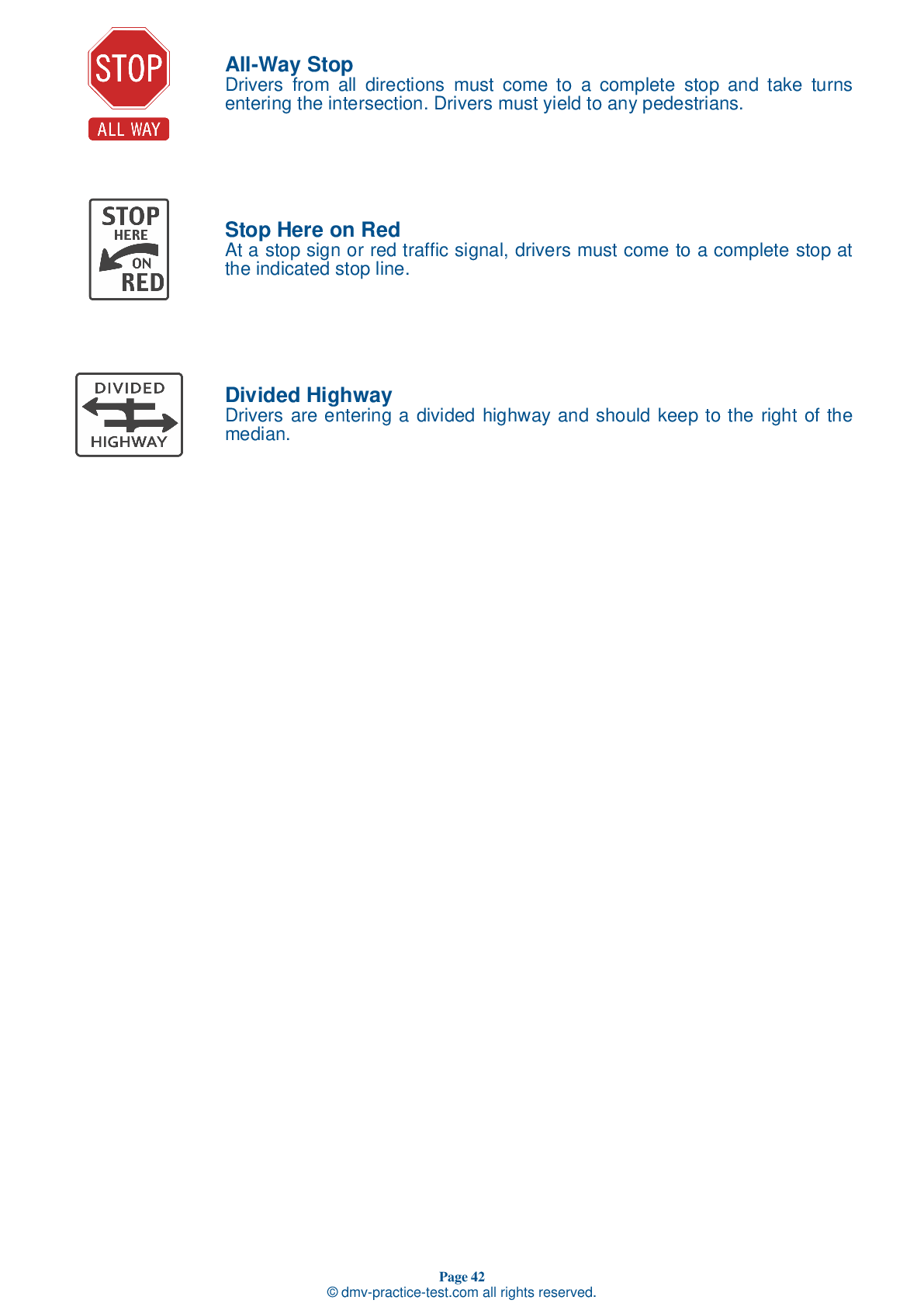Motorcycle Test | License KY 2025 | FREE Online Practice! #12 Page 4 of 4
Take this FREE motorcycle test (license in KY 2025) to check your knowledge of the road rules. To improve your results, download a motorcycle handbook online, study theory, and practice for free on our website. Still worried about how to get a motorcycle license in Kentucky in 2025? Check our website for more sample tests, train as much as possible, and boost your grades!
22 . When being followed too closely by another vehicle, you should:
The best way to deal with a tailgater is to get them ahead of you. If you can do so safely, change lanes and let them pass. Speeding up may only increase the danger by encouraging them to continue tailgating you at a higher speed.
23 . The gear shift lever is located:
The gearshift lever is located in front of the left footrest and is operated by the left foot. To shift up to a higher gear, position your foot under the shift lever and lift. To downshift, press the shift lever down.
24 . When passing another driver, you should:
Get out of another vehicle's blind spot as quickly as possible. When passing another vehicle, you should move into the passing lane and accelerate past the vehicle.
25 . It is recommended that you take a curve by beginning on the outside of the curve, moving to the inside of the curve, and exiting on the outside of the curve. An alternate option is to:
If there is no traffic present, it is recommended that riders take a curve by beginning on the outside of the curve, moving to the inside of the curve, and exiting on the outside of the curve. An alternate option is to start the curve in the center of the lane and remain in the center throughout the curve. Be aware of changing road and traffic conditions and adjust as necessary.
26 . When traveling in a group, you should generally ride:
In general, a staggered formation is usually the best option when riding in a group. This formation allows the group to maintain close ranks while also allowing each rider to maintain an adequate space cushion. It is best to move into a single-file formation when turning, going through curves, or entering or exiting a highway.
27 . The first thing you should do if your throttle becomes stuck is:
If your throttle becomes stuck, try twisting it back and forth several times. If this does not free your throttle, immediately operate the engine cut-off switch and pull in the clutch at the same time.
28 . When changing lanes:
Motorcycles have blind spots just like any other vehicle. Always turn your head and look over your shoulder to check for traffic in your blind spot before changing lanes.
29 . The primary source of information about your motorcycle should come from:
The owner's manual should be your primary source of information about your specific type of motorcycle. Be sure to read the manual before operating your motorcycle for the first time.
30 . When approaching an object or uneven surface that you cannot avoid, you should:
If you cannot avoid riding over an obstacle or uneven surface, you should approach it at as close to a 90-degree angle as possible. Slow down as much as you can, make sure that your motorcycle is upright, and rise slightly off your seat so your knees can absorb some of the force of impact. Just before contact, roll on the throttle slightly to lighten the front end.
See the exact questions that will be on the 2025 Kentucky DMV exam.
99.2% of people who use the cheat sheet pass the FIRST TIME
Jeneen was tired of paying $5/gallon. She got herself a scooter that required the motorcycle license. She studyed the motorcycle test cheat sheet and passed her test the next day!
Christopher tells us how he knew nothing prior to obtaining the motorcycle study guide, and he only got one question wrong because he clicked on the wrong answer by mistake.



